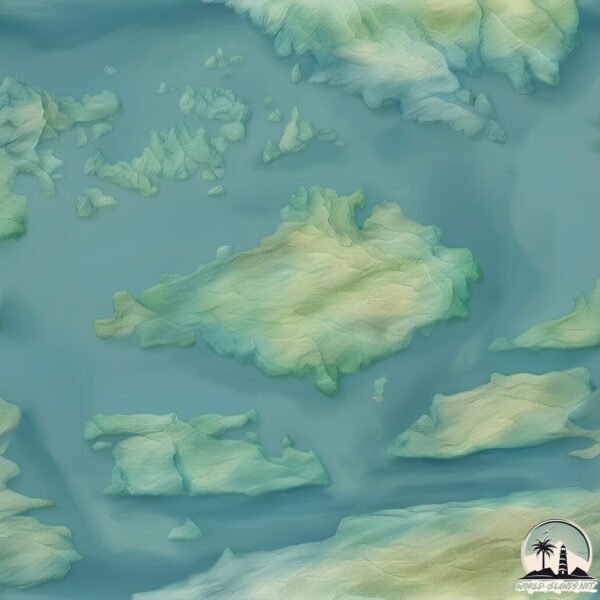Tomma

Welcome to Tomma, a Continental island in the Norwegian Sea, part of the majestic Arctic Ocean. This guide offers a comprehensive overview of what makes Tomma unique – from its geography and climate to its population, infrastructure, and beyond. Dive into the details:
- Geography and Size: Explore the island’s size and location.
- Climate and Weather: Weather patterns and temperature.
- Topography and Nature: Uncover the natural wonders of the island.
- Infrastructure and Travelling: Insights on reaching, staying, and making the most of your visit.
- News and Headlines: Latest News.
Geography and size of Tomma
Size: 46.3 km²
Coastline: 76.9 km
Ocean: Arctic Ocean
Sea: Norwegian Sea
Continent: Europe
Tomma is a Medium Island spanning 46 km² with a coastline of 77 km.
Archipel: –
Tectonic Plate: Eurasia – One of the world’s largest tectonic plates, the Eurasian Plate covers a significant portion of Europe and Asia. It’s characterized by diverse geological features, including the Ural Mountains, the European Plain, and the Himalayas formed from its collision with the Indian Plate.
The geographic heart of the island is pinpointed at these coordinates:
Latitude: 66.25504247 / Longitude: 12.80840689
Climate and weather of Tomma
Climate Zone: Continental
Climate Details: Subarctic Climate
Temperature: Cold Summer
Climate Characteristics: Characterized by long, extremely cold winters and short, cool summers, often found in northern latitudes of North America and Eurasia.
Topography and nature of Tomma
Timezone: UTC+01:00
Timezone places: Europe/Paris
Max. Elevation: 706 m
Mean Elevation: 228 m
Vegetation: Open Woodland
Tree Coverage: 39%
The mean elevation is 228 m. The highest elevation on the island reaches approximately 706 meters above sea level. The island is characterized by Plateau: Elevated flatlands rising sharply above the surrounding area, with a maximum elevation over 500 meters but a mean elevation less than 300 meters, forming unique highland areas on islands.
Dominating Vegetation: Open Woodland
Characterized by sparsely distributed trees with open canopy allowing sunlight to penetrate, supporting grasses and shrubs underneath. Often found in drier or transitional environments. Tomma has a tree cover of 39 %.
Vegetation: 7 vegetation zones – Very Highly Diverse Island
Islands in this range are ecological powerhouses, showcasing a wide array of vegetation zones. Each zone, from lush rainforests to arid scrublands, coastal mangroves to mountainous regions, contributes to a complex and interdependent ecosystem. These islands are often hotspots of biodiversity, supporting numerous species and intricate ecological processes.
Infrastructure and Travelling to Tomma
Does the island have a public airport? no.
There is no public and scheduled airport on Tomma. The nearest airport is Sandnessjøen Airport, Stokka, located 41 km away.
Does the island have a major port? no.
There are no major ports on Tomma. The closest major port is SANDNESSJOEN, approximately 26 km away.
The mean population of Tomma is 9 per km². Tomma is Gently Populated. The island belongs to Norway.
Continuing your journey, Lokta is the next notable island, situated merely km away.
Norway is classified as Developed region: nonG7: Developed economies outside of the Group of Seven, characterized by high income and advanced economic structures. The level of income is High income: OECD.
News – Latest Updates and Headlines from Tomma
Stay informed with the most recent news and important headlines from Tomma. Here’s a roundup of the latest developments.
- 'Good fire': B.C. Indigenous knowledge keeper says cultural burns prevent wildfires - Vancouver Sunon 23 June 2024
'Good fire': B.C. Indigenous knowledge keeper says cultural burns prevent wildfires Vancouver Sun
- Fossils suggest early primates lived in a once-swampy Arctic - Science News Magazineon 25 January 2023
Fossils suggest early primates lived in a once-swampy Arctic Science News Magazine
- A natural gene drive could steer invasive rodents on islands to extinction - Science News Magazineon 5 December 2022
A natural gene drive could steer invasive rodents on islands to extinction Science News Magazine
- Guttural toads shrank by a third after just 100 years on two islands - Science News Magazineon 19 November 2020
Guttural toads shrank by a third after just 100 years on two islands Science News Magazine
- An island in the Maldives is made of parrotfish poop - Science News Magazineon 12 May 2015
An island in the Maldives is made of parrotfish poop Science News Magazine
- Flowers make the menu for nearly all Galapagos birds - Science News Magazineon 11 March 2015
Flowers make the menu for nearly all Galapagos birds Science News Magazine
- Island orangs descend from small group - Science News Magazineon 22 November 2010
Island orangs descend from small group Science News Magazine
- Get ready to fly through the sky…with Sky Safaris! - SKNVibes.comon 8 May 2009
Get ready to fly through the sky…with Sky Safaris! SKNVibes.com
Please note: The data used here has been primarily extracted from satellite readings. Deviations from exact values may occur, particularly regarding the height of elevations and population density. Land area and coastline measurements refer to average values at mean high tide.
